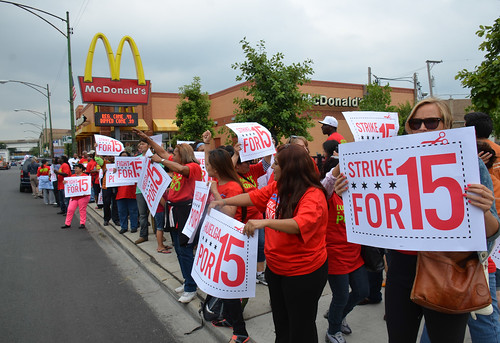
It turns out a lot of the workers who make Happy Meals aren't actually all that happy about it.
It was a sentiment made abundantly clear in late August during a wave of one-day walkouts, in which thousands of fast-food workers around the country took to the streets to demand higher wages and the opportunity to join a union. Spurred by protests in New York that began last November, and supported by the Service Employees International Union, the demonstrations took place in front of about 1,000 restaurants -- from McDonald’s and Burger King to Kentucky Fried Chicken and Subway -- in 60 cities throughout the country.
In 2012, the median hourly wage for a fast-food worker was a little under $9, according to the Bureau of Labor Statistics. But among the millions of fast-food workers in America, many earn at or near the federal minimum wage; just $7.25 an hour. Assuming a 40-hour week, that translates to about $15,000 a year, far below the cost of living pretty much anywhere in the United States, and well under half the median salary of all U.S. workers. Add to that the cost of health care and other benefits that most fast-food workers don't receive or have to pay mostly pay out of pocket, and you're looking at a pretty financially strapped work force.
The federal minimum wage, last raised in 2009, hasn't kept pace with the rate of inflation. It's a disparity that’s prompted the Obama administration to push for an increase to $9 an hour, a proposal opposed by most conservatives in Congress and unlikely to be approved in the near future. (In a handful of states the minimum wage is slightly higher, including California where it's $8 an hour. Washington State has the highest minimum wage in the country, at $9.19 an hour.)
“People can’t survive on the minimum wage,” Taco Bell employee Roberto Tejada told the New York Times. At the Los Angeles Taco Bell where he works, Tejada makes $8 an hour “Nobody who works full time should live in poverty,” he said.
